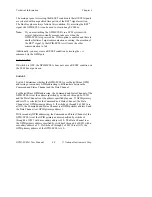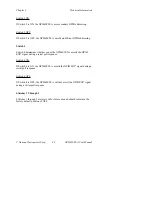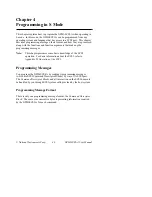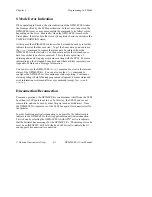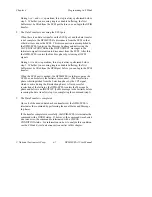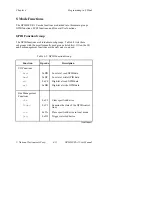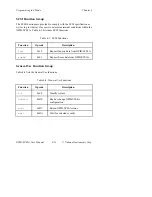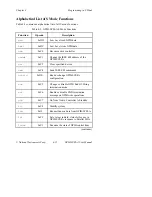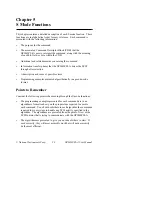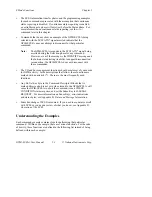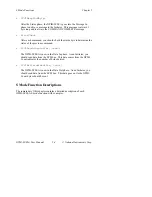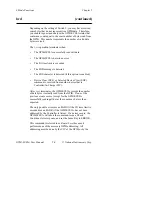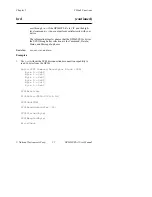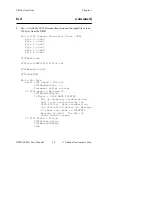
Chapter 4
Programming in S Mode
© National Instruments Corp.
4-9
GPIB-SCSI-A User Manual
Disconnection/Reconnection while Waiting for GPIB
Events
When an Initiator commands the GPIB-SCSI-A to perform a
wait
operation and you want a disconnection/reconnection, perform the
following steps:
1.
Selection Phase . The Initiator must select the GPIB-SCSI-A with
ATN* active to indicate that the Initiator has a message for the
GPIB-SCSI-A.
2.
Message Out Phase . As soon as the GPIB-SCSI-A is selected and
before going into the Command phase, the GPIB-SCSI-A responds to
the ATN* signal by going into the Message Out phase. The Initiator
then sends the IDENTIFY message with bit 6 (the hex 0x40 bit) set to
indicate that it can support disconnection/ reconnection. If this bit is
not set, or the Initiator does not issue an IDENTIFY message, the
GPIB-SCSI-A does not disconnect/reconnect.
3.
Command Phase . After following the Message Out phase, the
GPIB-SCSI-A goes into the Command phase to receive the command.
Once you have completed steps 1 through 3, the GPIB-SCSI-A performs
the following:
1.
The GPIB-SCSI-A disconnects from the SCSI by entering the Message
In phase and delivering the SAVE DATA POINTER and
DISCONNECT messages to the Initiator signalling its intention to
disconnect from the SCSI.
2.
Then the GPIB-SCSI-A enters the Bus Free phase by releasing all SCSI
signals and waits until any of the conditions occur that have been
specified in the
wait
mask.
3.
When one of the conditions occurs, the GPIB-SCSI-A arbitrates, gains
the SCSI bus, and reselects the Initiator to reconnect. (The Reselection
phase is distinguished from the Selection phase by the I/O* signal,
which is active during the Reselection phase.)
4.
After reconnection, the GPIB-SCSI-A enters the Message In phase and
delivers an IDENTIFY message (0x80) to the Initiator.
5.
The GPIB-SCSI-A then goes into the Status and Message In phases as
required to complete the command.





